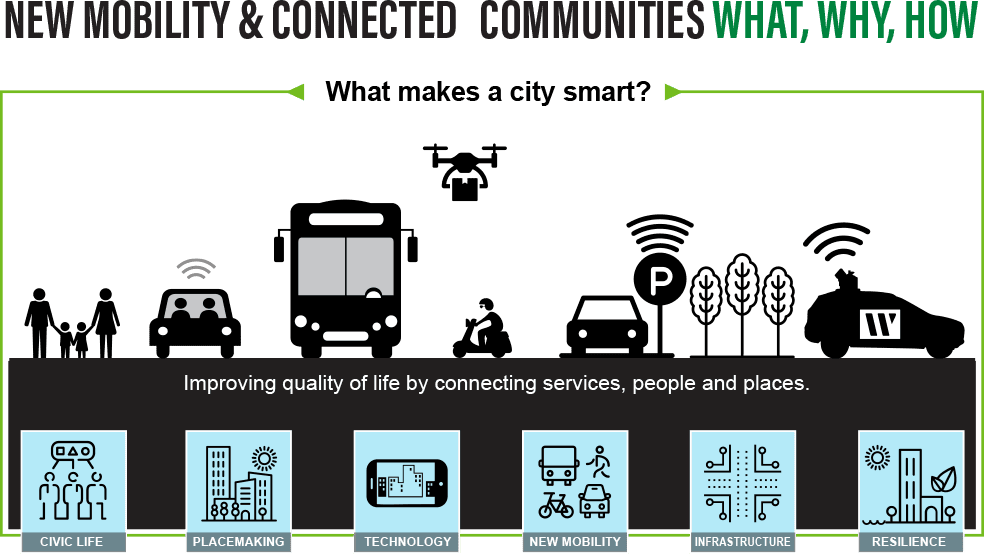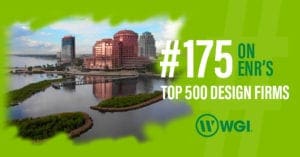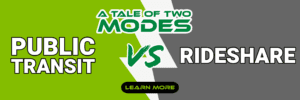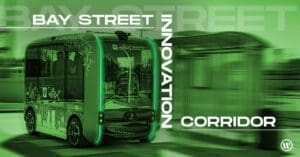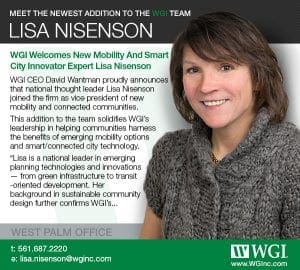With the growing clamor over smart city technology, cutting through the noise of matching technologies to local problem-solving can be overwhelming. It is no wonder that a recent study published in the Journal of the American Planning Association found only a handful of cities preparing for automated vehicles. Some cities are waiting for more regulatory clarity, while others don’t see the value proposition, particularly when compared to other immediate priorities. Cities also see liability and other risks given high-profile, fatal crashes involving autonomous vehicles on public streets. Finally, for communities that do wish to prepare for future automated and connected mobility, it is not generally clear where they need to begin.
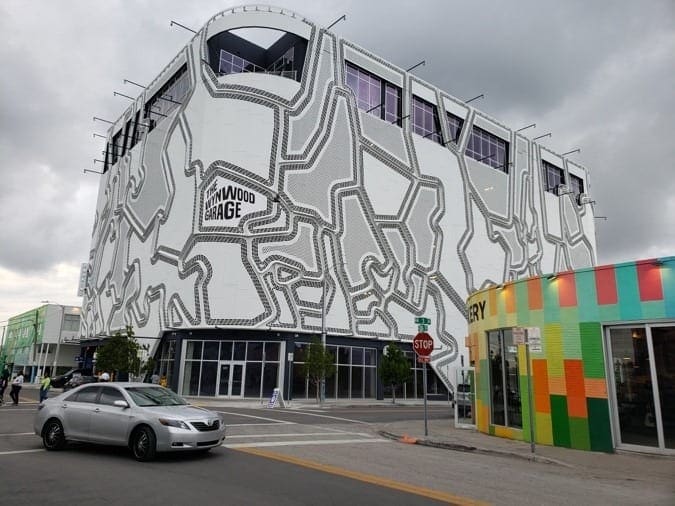
With all the publicity surrounding autonomous cars, what gets lost is how much innovative technology is already on the market or currently in testing phases.
For this reason, WGI is tackling a new generation of solutions through its New Mobility and Connected Cities program. In general, both categories leverage technology to improve service delivery and systems performance such as transportation in cities, suburbs, and rural communities. This performance is generally linked to important local goals such as energy efficiency, public health, and safety, as well as access to jobs, education, and healthcare. Importantly, WGI’s approach is helping communities determine the steps they need to take in addressing a future involving shared mobility, reduced dependency on fossil fuels, and of course, automation of vehicles and other services such as freight delivery.
What are the Elements of New Mobility?
“New Mobility” is a term referring to a broader array of travel choices, typically powered by new technologies. One aspect of new mobility is shared-use mobility, which offers an alternative to ownership for cars and bicycles. Another aspect is ride hailing and ride sharing through services such as Uber and Lyft. These disruptive companies are expanding their service models beyond the original on-demand taxi services to include scooter and bike share. This trend towards “Mobility-as-a-Service” aggregates all your travel options in one mobile app to make travel planning and payment as easy (or maybe even easier) than driving. Parking, once regarded as a standalone discipline, is tightly aligned with new mobility in two major ways. First, “parking tech” is its own sector, with new technologies for wayfinding, space sharing and automated parking. Second, the disruption in vehicle types, sizes, fuels, and ownership models, as well as rideshare and transit, are shifting parking demand and design.
Connected and automated vehicles are now in testing phases around the country, and include cars, shuttles, and two types of drones: air and ground (or delivery bots). With the rise in traffic congestion related to e-commerce deliveries, autonomous drones and vans are being tested as alternatives to trucks. In Virginia, George Mason University is testing ground drones and is now a pilot test bed for Amazon’s Prime Air 30-minute delivery service.
What are the Elements of Connected Communities?
“Connected Communities” refers to both the physical and digital connection of cities, campuses, and towns to improve the quality of life for community residents and provide an improved business environment. It includes communication between people, institutions, transportation modes, and public services to better manage public and utility resources, resulting in greater access for all citizens to jobs, healthcare, education, and cultural events.
At WGI, we look at the word “connected” in several ways. With technology, ensuring everyone has digital access is paramount. As an infrastructure company, we also believe in physically connecting communities through well-designed streets, sidewalks, and thoroughfares. From a transportation perspective, digital and physical connectivity are linked since trip-making requires communications among the traveler, the vehicle, streetside infrastructure, and various cloud-based services that enable travel decisions “on the fly.” Lastly, smart-city technology is not effective unless it helps socially connect people, providing information that assists them in accessing public resources, events, and services that improve their quality of life.
Smart-city technology includes a growing array of hardware, software, and communications networks. First, there is a set of foundational technologies needed to maintain a useful, secure, and reliable digital environment. This includes cybersecurity, digital governance, data management, and civic engagement.
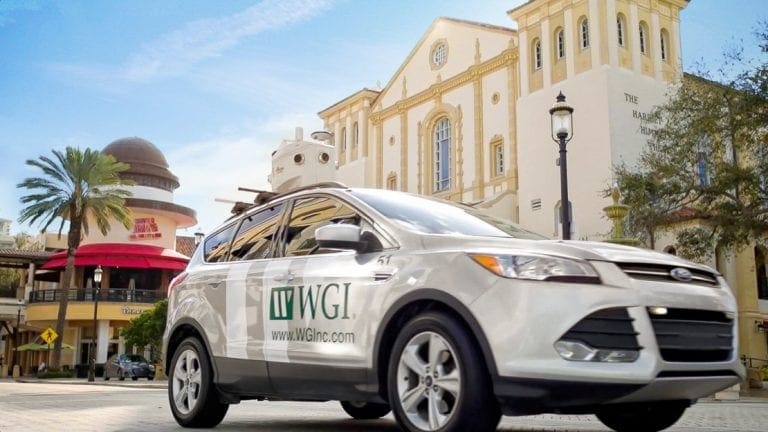
A second category is technology for the built environment. This includes smart buildings, utilities, and infrastructure. Transportation is a third category including new vehicle types, fleet electrification, and the Mobility-as-a-Service apps mentioned above, along with connectivity as needed to improve travel safety and reduce personal travel delays.
Mobility hubs are an interesting combination of transportation options, combined with a tech-powered hub, that aggregates multiple transportation options. This is reflected in the trend of adding car and bike share, as well as pick-up and drop-off (PUDO) zones, to transit stations and park-and-ride facilities. Importantly, many emerging land-use development trends involve creating villages and communities focused on mobility, employment, and everyday trips such as childcare and convenience stores. This attention to mobility hubs, use mix, and new mobility is a powerful tool for easing traffic and congestion.
Opportunities… and Challenges
Due to many of the technologies being new, transportation and smart-city technologies come with uncertainties and potential risks. As such, most cities are implementing technologies through pilot projects to test products and services in a small, controlled setting. Or, as the Journal of the American Planning Association research found, waiting for more clarity.
But there are good reasons to get started now:
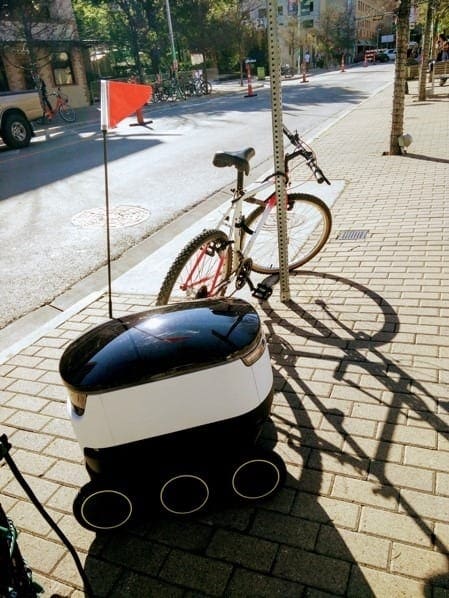
Disruption with New Mobility is Already Underway: Transportation Network Companies (TNCs) like Uber and Lyft are expanding mobility options in some communities, while causing congestion in others. Likewise, electric shared scooters and bicycles are popular for short rides, but pose safety challenges. As we learn from first-adopter cities, counties, and transit agencies, the path to expanding mobility lies in learning from their experiences and customizing technology pilots to the local transportation needs and challenges.
Problem Solving: A classic transportation problem is access to higher-speed, higher-quality transit stations, often referred to as the “first-mile/last-mile” challenge. To address this problem, King County, Washington teamed with the on-demand shuttle company Via specifically to link commuters to the transit system. This gave commuters an easy Uber-like experience for a vanpool while relieving traffic congestion and a parking crunch at the Eastgate Park-and-Ride facility.
Proactive Policy Development with the Community: Community input is critical on the front end of new approaches. Because many technologies come with both opportunities and risks, engaging the community can help identify areas of concern or work out the bugs of a new program, app, or service. Proactive resolutions or public statements also send signals to technology companies on expectations for how new technology is deployed to ensure privacy, security, and equitable service delivery.
Economic Competitiveness:The main goal of any smart-city program should be creating, expanding, or sustaining a thriving and livable community for everyone living, working, or visiting the area. A second reason cities initiate a program is economic competitiveness. In welcoming the chance to try new technology, a city sends signals on its readiness for business and talent development.
Preparing for Pilot Projects:Because communities are reluctant to heavily invest in experimental approaches, pilot projects are critical for testing, adjusting, and scaling novel technologies. However, too many pilots are incorrectly designed as one-off events, rather than a series of tests that each meet performance expectations. Engaging stakeholders on how to develop successful, data-informed pilots is as much an education in change management as it is about new hardware and software.
Getting Started
To sum it all up, your organization, community, or campus should begin to plan (or update your plans) for new mobility and smart-city technologies for:
- Better decisions – supported by the right kind of data
- Better focus – on people and places with the most urgent needs
- Improved services – for doing more with less
- Integrated programs – to remove silos
- Less waste – to meet sustainability goals and save money
- Transparency – to gain trust and build accountability
For communities and transit agencies, there is also a practical benefit: making sure your hard-earned plan update is not obsolete even before it’s issued. Here are three ways to make your plans future-ready:
- Plan update should address emerging options and trends: In scoping a plan update, include the variety of existing and anticipated shared-use mobility options (including moped share!). Forecasts should not be deterministic; they should consider a range of probabilities. For autonomous vehicles, make sure your plan lays the groundwork for pilot projects. In Comprehensive Plans, remember that transportation, land use, parking, and infrastructure are still linked, but in different ways. This requires getting in front of trends to spot potential impacts.
- Peer reviews can ensure your draft plans are not immediately obsolete: If your draft plan or update is nearing its final review and adoption processes, consider having WGI review and make recommendations for incorporating technology in a Comprehensive, Small Area, or Transportation plan. This will provide needed language to link smart-city technology to plan goals and help avoid later rework (rather than reworking).
- Workshop to address technology scenarios: If you are just getting started or want to get stakeholders up to speed on smart-city and transportation technology, consider an exploratory scenario-planning workshop. These workshops are designed to cover salient technologies, explore impacts, align activities across the organization, and identify next steps. These workshops also provide a collaborative setting with a shared focus on impactful trends.

